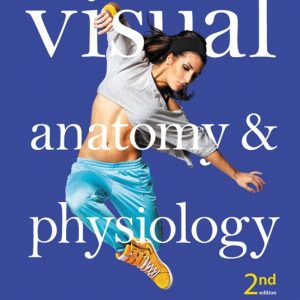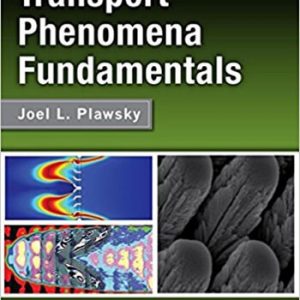Introduction to Psychology Version 3 0 3rd Stangor Solution Manual
Product details:
ISBN-10 : 1453387234
ISBN-13 : 978-1453387238
Author: Stangor
Introduction to Psychology is a concise and conceptual introduction to the fascinating subject of psychology. Featuring a central theme of action—predicting our own actions and those around us—this book grabs students’ attention and does not let go. A strong underlying secondary theme of empiricism unifies the narrative under the umbrella of psychology as a science. Its standard, fourteen-chapter organization (and a final chapter with answers to quiz questions) makes this textbook an ideal choice for either a typical semester- or quarter-long course.
Table of contents:
Chapter 1: Introducing Psychology
1.1: Psychology as a Science
The Problem of Intuition
Why Psychologists Rely on Empirical Methods
Levels of Explanation in Psychology
The Challenges of Studying Psychology
1.2: The Evolution of Psychology: History, Approaches, and Questions
Early Psychologists
Structuralism: Introspection and the Awareness of Subjective Experience
Functionalism and Evolutionary Psychology
Psychodynamic Psychology
Behaviorism and the Question of Free Will
The Cognitive Approach and Cognitive Neuroscience
Social-Cultural Psychology
The Many Disciplines of Psychology
1.3: Chapter Summary
Endnotes
Chapter 2: Psychological Science
2.1: Psychologists Use the Scientific Method to Guide Their Research
The Scientific Method
Laws and Theories as Organizing Principles
The Research Hypothesis
Conducting Ethical Research
Ensuring That Research Is Ethical
Research With Animals
2.2: Psychologists Use Descriptive, Correlational, and Experimental Research Designs to Understand B
Descriptive Research: Assessing the Current State of Affairs
Correlational Research: Seeking Relationships Among Variables
Experimental Research: Understanding the Causes of Behavior
2.3: You Can Be an Informed Consumer of Psychological Research
2.4: Chapter Summary
Endnotes
Chapter 3: Brains, Bodies, and Behavior
3.1: The Neuron Is the Building Block of the Nervous System
Neurons Communicate Using Electricity and Chemicals
Neurotransmitters: The Body’s Chemical Messengers
3.2: Our Brains Control Our Thoughts, Feelings, and Behavior
The Old Brain: Wired for Survival
The Cerebral Cortex Creates Consciousness and Thinking
Functions of the Cortex
The Brain Is Flexible: Neuroplasticity
3.3: Psychologists Study the Brain Using Many Different Methods
Lesions Provide a Picture of What Is Missing
Recording Electrical Activity in the Brain
Peeking Inside the Brain: Neuroimaging
3.4: Putting It All Together: The Nervous System and the Endocrine System
Electrical Control of Behavior: The Nervous System
The Body’s Chemicals Help Control Behavior: The Endocrine System
3.5: Chapter Summary
Endnotes
Chapter 4: Sensing and Perceiving
4.1: We Experience Our World Through Sensation
Sensory Thresholds: What Can We Experience?
Measuring Sensation
4.2: Seeing
The Sensing Eye and the Perceiving Visual Cortex
Perceiving Color
Perceiving Form
Perceiving Depth
Perceiving Motion
4.3: Hearing
The Ear
Hearing Loss
4.4: Tasting, Smelling, and Touching
Tasting
Smelling
Touching
Experiencing Pain
4.5: Accuracy and Inaccuracy in Perception
How the Perceptual System Interprets the Environment
Illusions
The Important Role of Expectations in Perception
4.6: Chapter Summary
Endnotes
Chapter 5: Consciousness, Body Rhythms, and Mental States
5.1: Sleeping and Dreaming Revitalize Us for Action
Sleep Stages: Moving Through the Night
Sleep Disorders: Problems in Sleeping
The Heavy Costs of Not Sleeping
Dreams and Dreaming
5.2: Altering Consciousness With Psychoactive Drugs
Speeding Up the Brain With Stimulants: Caffeine, Nicotine, Cocaine, and Amphetamines
Slowing Down the Brain With Depressants: Alcohol, Barbiturates and Benzodiazepines, and Toxic Inhala
Opioids: Opium, Morphine, Heroin, and Codeine
Hallucinogens: Cannabis, Mescaline, and LSD
Why We Use Psychoactive Drugs
5.3: Altering Consciousness Without Drugs
Changing Behavior Through Suggestion: The Power of Hypnosis
Reducing Sensation to Alter Consciousness: Sensory Deprivation
Meditation
5.4: Chapter Summary
Endnotes
Chapter 6: Growing and Developing Across the Lifespan
6.1: Conception and Prenatal Development
The Zygote
The Embryo
The Fetus
How the Environment Can Affect the Vulnerable Fetus
6.2: Infancy and Childhood: Exploring and Learning
The Newborn Arrives with Many Behaviors Intact
Cognitive Development During Childhood
Social Development During Childhood
Knowing the Self: The Development of the Self-Concept
Successfully Relating to Others: Attachment
6.3: Adolescence: Developing Independence and Identity
Physical Changes in Adolescence
Cognitive Development in Adolescence
Social Development in Adolescence
Developing Moral Reasoning: Kohlberg’s Theory
6.4: Early and Middle Adulthood: Building Effective Lives
Physical and Cognitive Changes in Early and Middle Adulthood
Menopause
Social Changes in Early and Middle Adulthood
6.5: Late Adulthood: Aging, Retiring, and Bereavement
Cognitive Changes During Aging
Neurocognitive Disorder and Alzheimer’s Disease
Social Changes During Aging: Retiring Effectively
Death, Dying, and Bereavement
6.6: Chapter Summary
Endnotes
Chapter 7: Learning
7.1: Learning by Association: Classical Conditioning
Pavlov Demonstrates Conditioning in Dogs
The Persistence and Extinction of Conditioning
The Role of Nature in Classical Conditioning
7.2: Changing Behavior Through Reinforcement and Punishment: Operant Conditioning
How Reinforcement and Punishment Influence Behavior: The Research of Thorndike and Skinner
Creating Complex Behaviors Through Operant Conditioning
7.3: Learning by Insight and Observation
Observational Learning: Learning by Watching
7.4: Using the Principles of Learning to Understand Everyday Behavior
Using Classical Conditioning in Advertising
Reinforcement in Social Dilemmas
7.5: Chapter Summary
Endnotes
Chapter 8: Remembering and Judging
8.1: Memories as Types and Stages
Explicit Memory
Implicit Memory
Stages of Memory: Sensory, Short-Term, and Long-Term Memory
Sensory Memory
Short-Term Memory
8.2: How We Remember: Cues to Improving Memory
Encoding and Storage: How Our Perceptions become Memories
Using the Contributions of Hermann Ebbinghaus to Improve Your Memory
Retrieval
The Structure of LTM: Categories, Prototypes, and Schemas
The Biology of Memory
8.3: Accuracy and Inaccuracy in Memory and Cognition
Source Monitoring: Did It Really Happen?
Schematic Processing: Distortions Based on Expectations
Misinformation Effects: How Information That Comes Later Can Distort Memory
Overconfidence
Heuristic Processing: Availability and Representativeness
Salience and Cognitive Accessibility
Counterfactual Thinking
8.4: Chapter Summary
Endnotes
Chapter 9: Intelligence and Language
9.1: Defining and Measuring Intelligence
General (g) versus Specific (s) Intelligences
Measuring Intelligence: Standardization and the Intelligence Quotient
The Biology of Intelligence
Is Intelligence Nature or Nurture?
9.2: The Social, Cultural, and Political Aspects of Intelligence
Extremes of Intelligence: Intellectual Disability and Giftedness
Extremely Low Intelligence
Extremely High Intelligence
Gender Differences in Intelligence
Racial Differences in Intelligence
9.3: Communicating with Others: The Development and Use of Language
The Components of Language
The Biology and Development of Language
Learning Language
How Children Learn Language: Theories of Language Acquisition
Bilingualism and Cognitive Development
Can Animals Learn Language?
Language and Perception
9.4: Chapter Summary
Endnotes
Chapter 10: Emotions and Motivation: Happiness, Stress, Health, Eating, and Sex
10.1: The Experience of Emotion
The Cannon-Bard and James-Lange Theories of Emotion
The Two-Factor Theory of Emotion
Communicating Emotion
10.2: Stress: The Unseen Killer
The Negative Effects of Stress
Stressors in Our Everyday Lives
Responses to Stress
Managing Stress
Emotion Regulation
10.3: Positive Emotions: The Power of Happiness
Social Support: Finding Happiness Through Our Connections with Others
What Makes Us Happy?
10.4: Two Fundamental Human Motivations: Eating and Mating
Eating: Healthy Choices Make Healthy Lives
Eating Disorders
Obesity
Sex: The Most Important Human Behavior
The Experience of Sex
The Many Varieties of Sexual Behavior
10.5: Chapter Summary
Endnotes
People also search:
introduction to psychology chapter 3 summary
an introductory psychology student expresses an interest
an introduction to the psychology of hearing pdf





